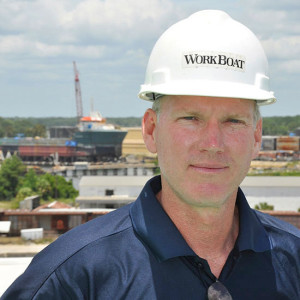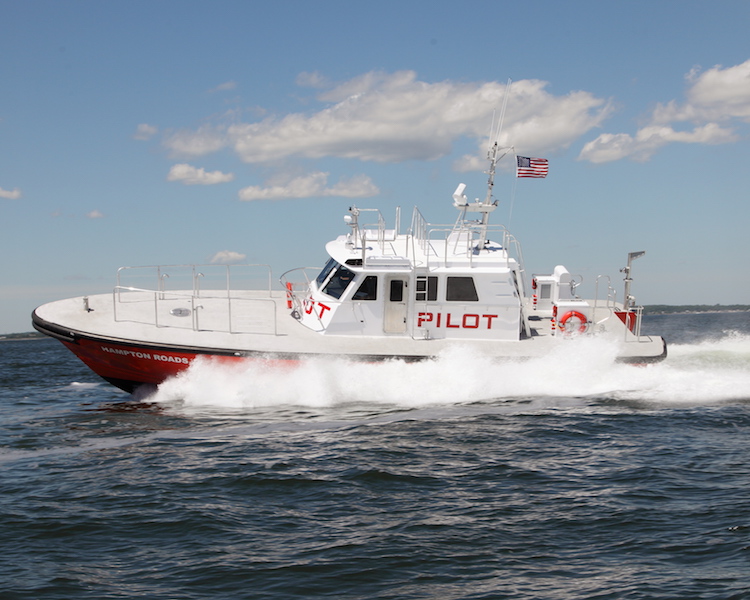The Virginia Pilot Association took delivery in late June of a Chesapeake-class MKII launch from Gladding-Hearn Shipbuilding.
The Hampton Roads, a new generation of the Somerset, Mass., shipyard’s Chesapeake-class launch, is the Virginia Pilot's eighth Gladding-Hearn pilot boat. Since the Chesapeake class was introduced by the shipyard in 2003, 20 have been delivered to U.S. pilot associations. The latest improvements incorporate the performance benefits of Volvo Penta’s IPS 3 pod system, which provides for higher speed, lower fuel consumption and more comfort, according to Peter Duclos, the shipyard’s president.
With a deep-V hull designed by C. Raymond Hunt & Associates, New Bedford, Mass., the all-aluminum pilot boat measures 55'x17', and has a 4.11' draft. It is powered by twin Volvo Penta D13-700, Tier 3-certified diesel engines, each producing 700 hp at 2,250 rpm. Each engine is connected to a Volvo Penta IPS-3 propulsion pod, fitted with dual forward-facing, counter-rotating propellers and integrated exhaust system, and Volvo Penta’s integrated EPS electronic steering and control system. The vessel’s top speed is over 32 knots.
The EPS control system and three-axis joystick increases the boat’s overall maneuverability alongside a ship and when docking, said Duclos.
The pilots sought to optimize fuel economy, vessel handling and comfort, so the shipyard installed a Humphree interceptor automatic trim-optimization system on the MKII launch.
“The combination of the Volvo Penta IPS system and the Humphree interceptors gives the pilots faster acceleration, higher speeds and improved comfort, while burning about 25 percent less fuel than the standard Chesapeake-class launches,” said Duclos.
The Hampton Roads is equipped with Humphree’s coordinated turn optimization system, which is integrated with the pod drives, and can accept a gyro-stabilization system and active interceptor ride control to further reduce vessel roll and pitch.
A Northern Lights/Alaska Diesel Diesel generator, with 12-kW of output, provides electricity.
Key design changes in the Chesapeake-class MKII launch include positioning the wheelhouse aft of amidships to improve comfort and provide for a larger foredeck. With the pods close-coupled to the engines, the engine room is located well aft of the wheelhouse with easy access to machinery through a deck hatch.
The wheelhouse is outfitted with five NorSap shock-mitigating reclining seats, an integrated Furuno navigation system, and a Flir thermal imaging system. The wheelhouse is cooled and heated by two 16,000-Btu reverse-cycle HVAC units. The forecastle, with a 12,000-Btu AC unit, includes a settee berth, enclosed head and small galley.
Outside of the wheelhouse are heated side-decks and handrails, and boarding platforms on the roof and, port and starboard, on the foredeck. A control station is located at the transom, along with a winch-operated, rotating davit over a recessed platform for pilot rescue operations.
Capacities include 800 gals. of fuel and 25 gals. of potable water.




